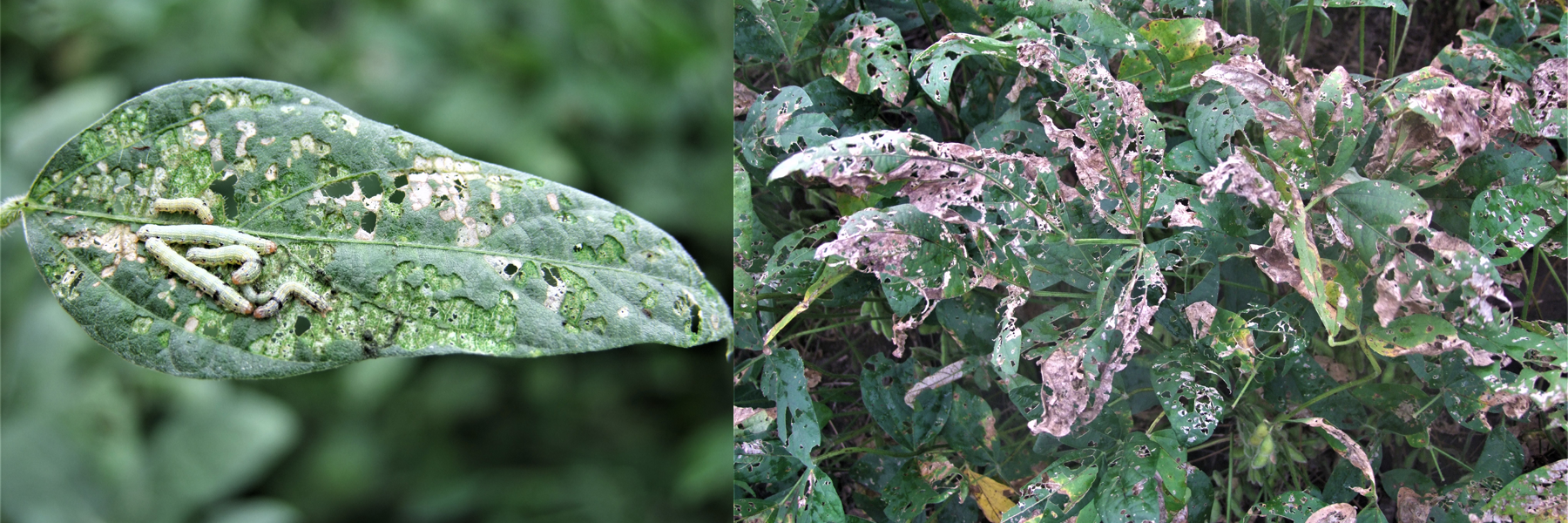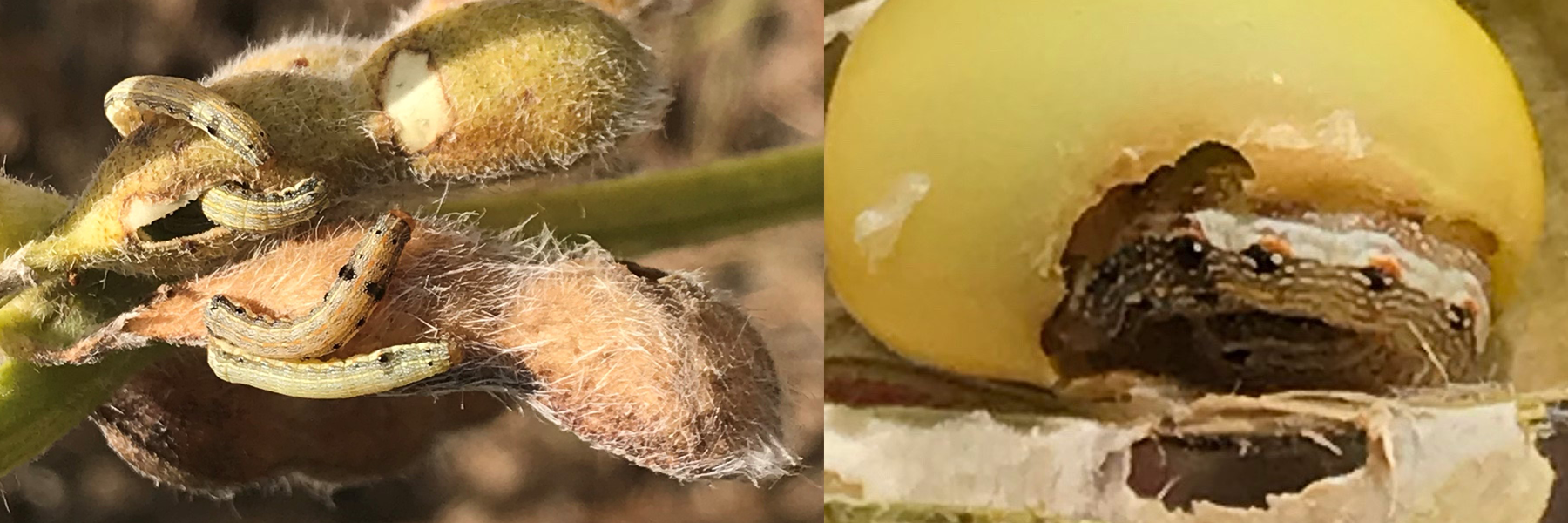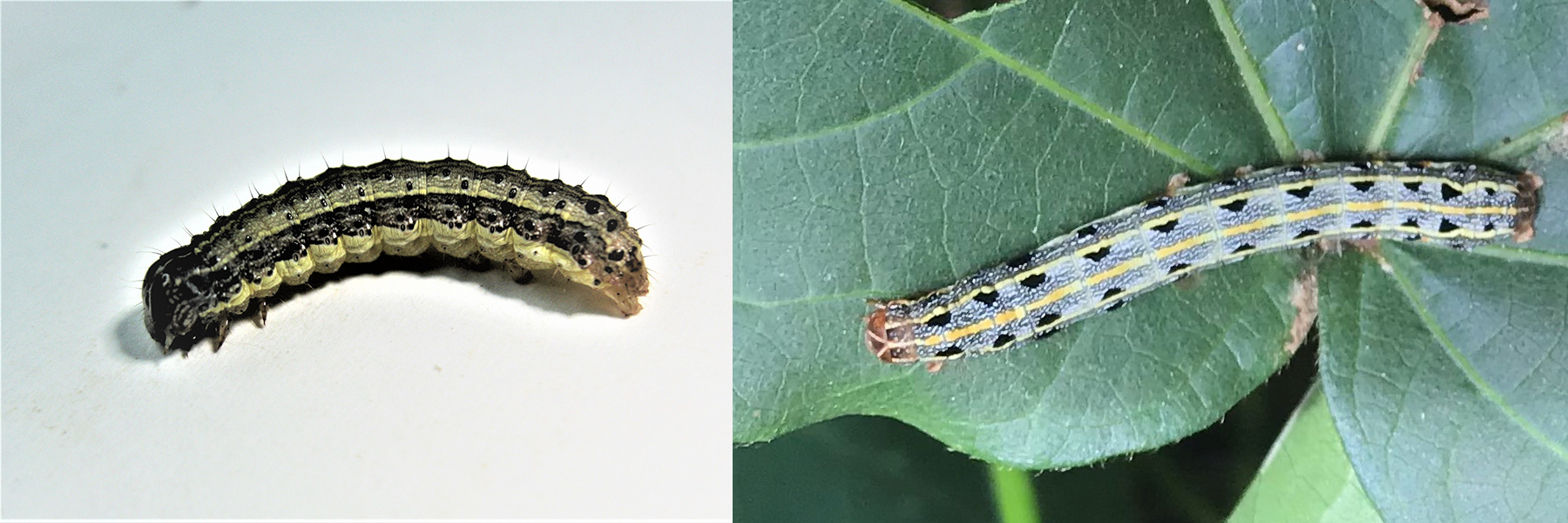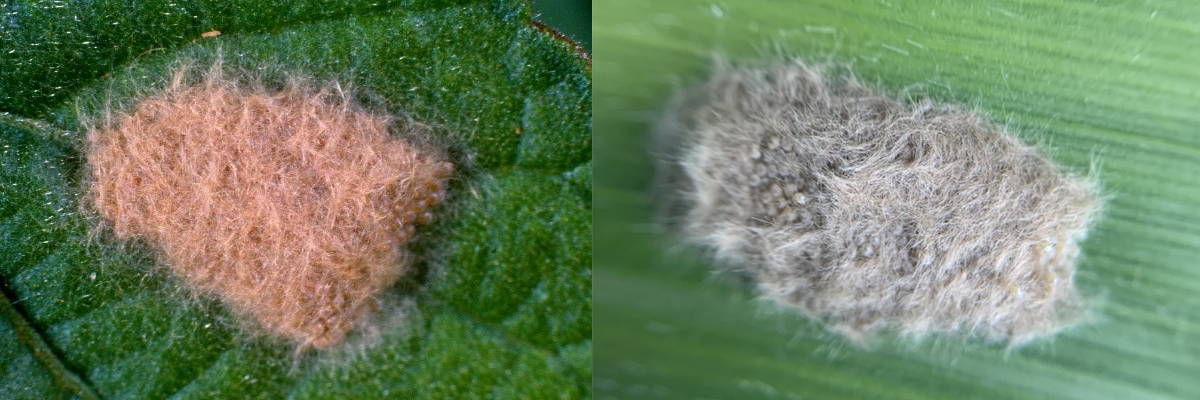Update (20 April): There are reports that cluster caterpillars are also switching from leaf to pod feeding in maturing crops in the Mackay region, with a report of 5-10 larvae per square metre in many crops. Growers and consultants in all coastal regions are urged to check their crops for late season cluster caterpillars.
Reports have just come to hand of maturing soybean crops heavily infested with cluster caterpillar (Spodoptera litura). This pest has been present in high numbers all summer, but until now has focused on the leaves. However, as soybean crops are approaching harvest maturity, larvae are switching their attention to the pods and the seeds within. This is because in ripening soybeans, the leaves become progressively less nutritious as their nutrients are redirected to the ripening pods.

Foliar damage by cluster caterpillar in soybeans: young larvae (left ~9mm) and heavy defoliation in podding soybeans with still-green leaves (right). Very little pod damage seen in this crop (photos by Hugh Brier).

Cluster caterpillars attacking soybean pods and seeds (Photos by Paula Mizzi)
Note the distinctive dark shoulders (that appear first) and the large black spots that develop along the sides of even medium-sized cluster caterpillar larvae that differentiate them from larvae of helicoverpa and fall armyworm Spodoptera frugiperda.

Medium (~17mm) fall armyworm larvae and large (~30 mm) cluster caterpillar (Photos by Hugh Brier and Paul Grundy)
Moths of both Spodoptera species lay ‘furry’ egg masses, but those of cluster caterpillars are beige to brownish, while those of fall armyworm are greyish or white.

Cluster caterpillar egg mass (left) compared to fall armyworm eggs mass (right). Photos by Joe Wessels and Melina Miles.
There are currently no registrations for chemical management of cluster caterpillar in soybeans; products applied for helicoverpa (other than the helicoverpa-specific viral pesticide NPV) or fall armyworm management are likely to provide incidental control.
In maturing soybean crops, the choice of caterpillar insecticides is restricted by their withholding periods (WHP), which must be less than the time until the crop is likely to be harvested or desiccated. Products with short 7-day WHPs include methomyl or synthetic pyrethroids (SPs) such as alpha cypermethrin, cypermethrin and deltamethrin. The SP lambda cyhalothrin WHP is 21-days in soybeans, and is therefore not suitable for use in a maturing crop. Note also that methomyl is extremely toxic, so extra care must be taken when spraying to avoid drift onto adjoining properties or off target drift on your own property.
